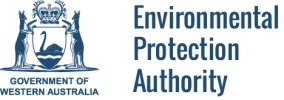Thousands of tonnes of household waste, otherwise destined for landfill, will be converted into electricity under a proposal which has been recommended for conditional approval by the Environmental Protection Authority.
Phoenix Energy Australia’s waste-to-energy facility at the Kwinana Industrial Area would receive and process up to 400,000 tonnes of (post recycling) household waste, enough to produce up to 36 megawatts of electricity for the South West Interconnected System and power about 46,000 homes.
EPA Chairman Dr Paul Vogel said the proposal, which includes a waste receiving area, two fully automated furnaces or lines, a steam system with electricity generation, a flue gas cleaning Air Pollution Control system, and a flue gas stack, was assessed as a Public Environmental Review – this is the highest and most rigorous level of Environmental Impact Assessment.
Dr Vogel said, if approved, the facility would use advanced combustion technology, similar to commercial facilities already operating successfully in other parts of the world including Japan and Europe.
Dr Vogel said that, following the removal of the recyclable materials, the residual solid waste collected from households would be the primary fuel source for the plant. Waste delivered to the plant would be fed through the combustion system to produce heat. The heat would be used in the plant’s boilers to produce high pressure steam which would be used to drive a turbine, producing electricity.
“The plant would use proven technologies to minimise the discharge of pollutants to the atmosphere and would be required to meet stringent emissions limits specified by the European Union’s Waste Incineration Directive (WID),” Dr Vogel said.
The EPA has recommended several conditions including the requirement of a publicly-available Waste Acceptance Monitoring and Management Plan, which will describe and record the waste types accepted on site and disposed off-site.
“Waste types strictly not permitted to be processed include medical and radioactive waste, asbestos, contaminated soils, tyres, animal carcasses and highly corrosive or toxic liquids or gases. Commercial, industrial, construction and demolitions wastes will also not be permitted,” Dr Vogel said.
Dr Vogel added that the proponent would be required to prepare and implement an Ash Reuse Management Plan.
“The facility aims to reuse the ash produced in the combustion process to make by-products such as bricks and pavers. The management plan will ensure that by-products meet all the necessary environmental criteria and are fit for use on an on-going basis,” he said.
The EPA’s report to the Minister for Environment is now open for a two-week public appeal period, closing 16 February 2015. Appeals are administered independently by the Appeals Convenor and can be made at www.appealsconvenor.wa.gov.au
The Minister for Environment will make the final decision.
The EPA’s Kwinana Waste to Energy Project report 1538 is at>www.epa.wa.gov.au.
EPA Media Contact: Nadia Miraudo 0400 866 450
Background
In 2013, the Environment and Health Performance of Waste to Energy Technologies review (EPA and the Waste Authority) concluded under Section 16(e) of the Environmental Protection Act 1986 that it had been demonstrated internationally that when a waste-to-energy plant is well-designed and operated using best practice technologies and processes, it can operate within strict emission standards and with acceptable environmental and health impacts to the community.
